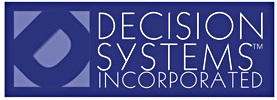Who Are the Animals of Analytics-Based Performance Management?
 Ever notice how the personalities and dispositions of animals often resemble humans’? An organization’s pursuit of adopting analytics-based performance management involves personalities of all types. How are they like the creatures that populate our planet? Here is a zoology of analogous types of employees that you might recognize.
Ever notice how the personalities and dispositions of animals often resemble humans’? An organization’s pursuit of adopting analytics-based performance management involves personalities of all types. How are they like the creatures that populate our planet? Here is a zoology of analogous types of employees that you might recognize.
- Lions – These are the managers whom co-workers respect. They are bold and lead their pride. With analytics-based performance management, their boldness enables them to have the will to try emerging managerial concepts. These include strategy maps and their companion, the balanced scorecard; activity-based costing to measure product and customer profitability; and driver-based budgeting with rolling financial forecast updates. In the wild, males seldom live long due to injuries sustained from continuous fighting with rivals. In business, lion-like managers will encounter conflicts in their pursuit and support of these managerial concepts.
- Peacocks – These are those employees who like to look good to everyone. Peacocks cannot fly; this type of employee’s contribution to implementing analytics-based performance management is limited. They like to take credit and display their plumage, but they have not earned the credit they presume to claim.
- Owls – These are those wise sages who truly understand what analytics-based performance management is all about. They tend to be quiet and are careful observers. An owl’s survival strategy depends on stealth and surprise. It would be nice if the owl-like employee would speak up more and tell the lions what is really happening. Who is on board, and who are the naysayer obstacles to applying progressive methods that can result in better decisions – like applying business analytics?
- Rabbits – These are those ready-fire-aim project managers who are impatient with slow progress. Sometimes their sense of urgency is needed to quickly move things along. They endorse techniques like rapid prototyping with iterative remodeling to get sufficient results with speed so that others understand what benefits the methodology can bring. But sometimes, their haste can land the project in a ditch.
- Tortoises – Like the owls, these are very smart workers. They move slowly, but they know where the project should go. Most everyone knows the tortoise and the hare fable. The tortoise won the race because it figured out that having perseverance and a sense of direction is best in the long term.
- Skunks – These employees are bad news for analytics-based performance management projects. Just when there is some traction with getting organizational buy-in from others, they stink up the project with unsubstantiated fears that the project has little or no payoff. They need to be kept distant from the project.
- Armadillos – These are thick-skinned employees whose egos are near impenetrable, just like an armadillo’s armor. They can handle attacks from naysayers who fear change. Armadillos are prolific diggers with sharp claws. Similarly, their analogous employees are heads-down hard workers who want to see the job done.
- Crocodiles – These employees wait ever so quietly until they see an opportunity. Then, when the moment is right, they snap into a debate about whether the project is valid and will lead to improvements. They believe in the project and rarely lose.
- Horses –Workhorses are invaluable. They work long hours making sure that correct and clean data is ready for input to drive the analytics-based performance management projects to yield the insights and actions the projects are designed to deliver. Horses can sleep standing on their legs. This is good for late-hour efforts. Thoroughbred racehorse-type employees are a special breed. They not only work hard but also fast.
- Ostriches – Everyone immediately thinks the analogy for an ostrich might be employees who stick their head in the ground to hide and avoid confrontations. But that is a misconception. Ostriches can run 70 miles per hour and can viciously kick with their legs in conflict. They are nomadic. Ostrich-like managers are strong and also nomadic because they like to move from one functional area to another after they have made their mark. They make an impact at a crucial time in the analytics-based performance management project and then secure a new job elsewhere.
- Snakes – Beware of these types of managers. Snakes can swallow prey much larger than their heads due to the flexibility of their jaws. Some have deathly venom to poison their prey. Analogous managers have similar traits but use office politics in place of venom. They are not interested in the success of the project and are self-centered with no hesitancy to derail a co-worker’s career.
- Beavers – We like beavers. They love to construct dams. Analytics-based performance management is all about model building. A managerial accounting system using activity-based costing principles is a model for measuring how an organization consumes resource expenses into calculated costs of outputs, products, services, channels and customers. A strategy map is a model of the executive team’s strategic objectives and how they causally link the behavior of employees with measures aligned with the strategy. You get what you measure. And beavers are busy workers.
- Eagles – These are the true leaders. Eagles have extremely keen eyesight. Unlike managers who cope with complexity, eagle-like leaders cope with change and must exhibit vision and inspiration. The best leaders for analytics-based performance management have that vision to inform their organization with knowing the direction they want to go. The other managers and employees then determine the best ways to get there.
- Lemmings – The myth of lemmings is that they commit mass suicide when they migrate and mindlessly fall off cliffs. You might think my metaphor of them is the type of employee who goes along unquestionably with their co-workers’ opinions. But the truth is that lemmings are solitary animals who are good at focusing on primary tasks, like burrowing for food. Analytics-based performance projects need this type of intensity in lemming-like employees.
- Sheep – These are employees who are too timid to speak up when the project really needs their help. They are smart enough to differentiate good from bad, but when the project team really needs their support, they are unreliable. Sheep have good hearing; sheep-like employees are sensitive to noise from the naysayers. Sheep have poor eyesight and tend move from darkness to lighted areas. If sheep-like employees cannot see the value in analytics-based performance management methodologies, they move to a comfortable area – the status quo.
- Elephants – Elephants are a symbol of wisdom and are famed for their memory and intelligence. Adult elephants have no natural predators (except humans). Elephant-like employees are important for analytics-based projects because their sharp memories can recall what works and what does not. They are typically veteran workers whose opinions are widely valued. If they buy in, the project has a good chance to succeed.
So, what animal-like types of employees do you work with? Probably all of the types above. The promise for the continued adoption rate of analytics-based performance management is that animals have prospered for thousands of centuries. They survive because there is some balance to how they coexist.
The same prosperity will apply to the increasing adoption rate of analytics-based performance management methods and the software systems that support the methods. Hundreds of types of animals coexist in the wild (mankind willing). Their generations continue. Organizations that maintain balanced and rational thinking will continuously learn and improve the same way that animal offspring learn from their elders.
